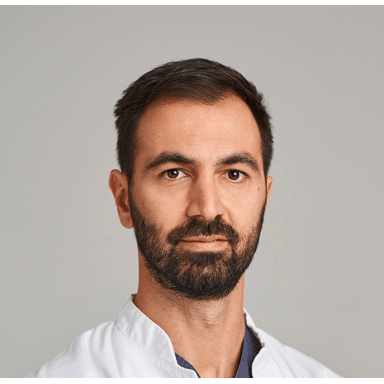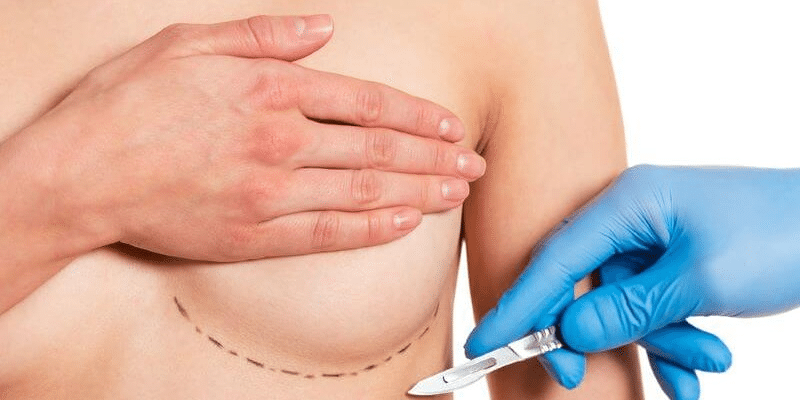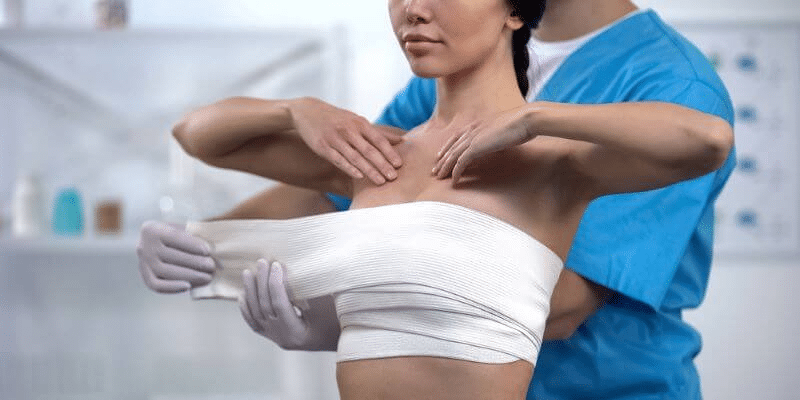A Guide to Understanding Breast Reduction Scars
Breast reduction scars is a common topic for patients wanting to undergo breast reduction surgery, which is a procedure that has become increasingly popular for providing relief from the physical and emotional burdens that having large breasts can bring about. Women can experience discomfort or pain in the back, neck or shoulders, or feel that their confidence is hindered by the shape of their breasts. In cases like these, seeing a plastic surgeon for a breast reduction can permanently reduce their weight as well as the sagging caused by it.
One of the most common problems after breast reduction surgery is dealing with the scars as they heal, which is a prospect that can delay a person’s commitment to the procedure. However, the first thing to understand is that breast reduction scars are a normal, inevitable part of the process, as is the case with any type of surgery. As such, the scarring you see immediately after the procedure is going to be subject to fading and it can also be managed further to be even less visible. It should be noted though, that breast reduction scars are ultimately permanent, but for most patients they fade to the point of being very hard to see.
In this article, we lay out a comprehensive guide on understanding breast reduction surgery, the scars that are left by it, and how recovering patients proceed.
What Is Breast Reduction Surgery?
A breast reduction is a surgical procedure aimed at reducing the size and volume of the breasts, with patients attaining a more comfortable weight and desirable shape. Aside from the aesthetic improvement it achieves, the goal is usually a practical one, alleviating the hardship of carrying overly heavy breasts that cause strain on other parts of the body.
The surgery involves removing excess tissue, fat, and skin in a way that makes the breasts proportional and symmetrical when the incisions then are sutured. Repositioning the nipples is also done as a part of attaining this result; in rare cases they can be removed entirely and placed back on. This is performed under general anaesthesia and the operation takes between three to five hours. Your breasts are dressed afterwards, and as part of the recovery process you may be advised to wear a special supportive bra.
Recovery takes between one to two weeks, with exercise being possible again a month later. In most cases, breast reduction scars after six months should already be quite well healed, though each patient will react differently, and in some cases a year is required for them to fade away.
We'll help you find an experienced, qualified surgeon at the most affordable rate!
Qunomedical only lists clinics and doctors that have been thoroughly vetted with quality and affordability in mind. Contact us for your 100% free, non-binding assessment to get your breast reduction surgery underway.
How Does Breast Reduction Leave Scars and What Can I Expect?
Understanding the role of scarring can help prospective patients set realistic expectations and address concerns related to the appearance and impact of breast reduction surgery scars.

“After a breast reduction surgery, visible scars cannot be completely avoided. They run around the nipple to the underside of the breast. Depending on the technique and healing process, they will significantly fade over time. However, if the remaining scars still bother you, in most cases, they can be made almost invisible through treatments such as PRP or Morpheus8. ”
Dr. Themistoklis Stavrakis
Stavrakis Aesthetics,
As stated, scarring is a natural part of any surgical procedure. The depth of the incisions made by the surgeon and their need to be sewn shut again prompts your body into a far more intensive process of healing than any other more superficial cut to your skin. As for the shapes and lengths of your breast reduction scars, that depends on the technique used.
What Types of Incisions Are There?

During your consultation, your surgeon will consider factors such as the size of your breasts, their shape, and how to attain your desired outcome. These will play the leading role in determining which incision the surgeon will perform, which could be one of the following:
Anchor Incision
Also known as the ‘inverted T’ incision, the anchor involves making three connected cuts: one that circles around the areola (surrounding the nipple), another that goes vertically to the fold beneath the breast, and finally one that then follows the curve underneath. The resulting shape is one that resembles an anchor.
This technique allows for the thorough and substantial removal of tissue and skin, making it particularly suitable for women requiring significant breast reduction surgery. Scars resulting from it are more extensive than from the other techniques, but it is the most commonly used.
Vertical Incision
This method is also known as a ‘keyhole’ incision or – as with the anchor being named after its shape – the ‘lollipop’ incision. This technique is made up of two cuts: one around the areola and another following straight down the underside of the breast. It’s the same as the anchor, only it eliminates the bottom cut that runs along the fold; an omission that makes the vertical incision particularly favourable for moderate results, though it can still be used to also attain a substantial breast reduction. Scars resulting from this technique are of course one less than from the anchor, though they can appear to be just as visible initially.
Periareolar Incision
For minor lifts, where only a small amount of skin is to be removed, the periareolar technique can be used. In this case, a small access point around the nipple is sufficient, also known as the "donut" incision. Through this opening, the excess skin tissue can be removed in a ring shape and the skin can then be tightly pulled together.
The scarring from this breast reduction technique is the most minimal out of the three, and has the added benefit of blending in with what is already a natural transition of colour and texture between the areola and the surrounding skin.
Which Technique Is Right for Me?
Patients won't choose the incision type that is performed for their breast reduction. This is something that the surgeon will determine based on your individual criteria. Knowing the different incision techniques can help you to ask more in-depth questions though, as well as understand the scarring they will incur. Your surgeon will be able to go into much more detail and may be able to give you a more personalised timeframe of how your full healing process will go.

How Visible Are Breast Reduction Scars?
In terms of just how many scarring lines there are, that will depend on the technique you undergo, as outlined above. The scars’ starting point will be the skill of the surgeon, who will make every effort to minimise their prominence. The healing process that fades the scars is then a matter that depends heavily on individual genetic characteristics. For those apprehensive about this aspect of breast reduction surgery, scars are ultimately a product of one’s own body and their ability to fade is too.
When the scar tissue forms, it mostly appears vein-like, having a slight rise as well as differing colour to the surrounding skin. These immediate appearances go away within a few weeks, leaving a still-perceptible line that is then subject to further fading. Patients may initially find them to be itchy or painful, but this is usually down to the natural healing process and the tissues adjusting to their new placement, respectfully; these subside soon after the procedure.
Potential Complications
One of the most common ones that can arise in breast reduction surgery scars is the development of keloid scars: these grow to be larger than the incision site and appear a lot more raised. They also won’t fade over time, rather growing in size as the months pass. Patients with a darker skin tone are genetically more prone to developing keloids.
Another potential development is that of hypertrophic scars, which appear a month or two after the procedure as an abnormal response to the wound. These scars are treatable or will fade again over time.
As with any procedure, complications are always a possibility, though the vast majority of patients won’t encounter any with their breast reduction scars.
Scars Fading through the Healing Process
Scars go through a maturation process that recedes into lower visibility. It is crucial to remember that scar improvement continues gradually as the body's healing mechanisms work to remodel the scar tissue, which is something that will simply take time. Your surgeon will talk you through the process and advise you on some practices that can optimise the speed and outcome of your healed breast reduction scars.
Generally, breast reduction scars after six months to a year will have undergone the bulk of their natural healing. An overview of how the timeline evolves looks like this:
Initial stage: immediately after surgery, scars may appear red, raised, and slightly swollen. This is a normal part of the healing process and can last for several weeks.
Maturation: over the following months, scars gradually fade in colour and flatten. Scar tissue undergoes remodelling, resulting in improved texture and a softening of the scars.
Long-term healing: scar healing continues for up to 12-18 months post-surgery, where their colour can continue to blend in with the surrounding skin, becoming even less noticeable.
Everyone's healing process is unique, meaning individual factors like genetics and overall health, can influence scar healing. Patience and consistent scar care are very important, and follow-ups with your surgeon is a good way to gauge your progress.
How to Manage and Minimise Breast Reduction Scars
There are a few things you can actively do to promote healing and diminish the appearance of your scars after breast reduction surgery.
Topical ointments: treatments such as silicone gels are commonly recommended by surgeons to improve the rate of healed breast reduction scars. Silicone products create a protective barrier over the scar, reducing moisture loss and providing an optimal environment for healing. Other recommended wound-healing creams can also be beneficial, especially those that contain ingredients like vitamin E and aloe vera – just be sure that your surgeon approves of them first.
A support bra: wearing one of these can not only minimise the scars’ presence, but also reduce swelling and help shape the breasts as they heal. The clinic usually provides such a garment, as well as those for compression immediately after the procedure.
Lifestyle changes: making sure you’re drinking plenty of water, eating nutritious foods and refraining from smoking will contribute to the healing of your scars.
Scar massage: massaging the scar with clean hands or using a recommended moisturiser can help to break down scar tissue, increase blood flow, and improve scar flexibility. Your surgeon will be able to instruct you on the appropriate technique for scar massage and when it is safe to start doing so.
Additional non-invasive treatments: seeing a professional who can administer treatments like PRP injections, Morpheus8 or laser therapy can also benefit the reduction of scarring.
We'll help you find an experienced, qualified surgeon at the most affordable rate!
Qunomedical only lists clinics and doctors that have been thoroughly vetted with quality and affordability in mind. Contact us for your 100% free, non-binding assessment to get your breast reduction surgery underway.
Healed Breast Reduction Scars and the Long Term
Your breast reduction surgery scars will always be slightly visible to some degree. Provided there are no complications and you give it time, these will be very hard to see, as is the case with the majority of procedures. Besides, the scarring is always going to be easy to conceal with clothing – even with summer or swimming wear – no matter what stage you’re in. Though the scars may be permanent, so is the joy that many women feel from having less physical strain and better self-confidence with their lighter, lifted breasts.
At Qunomedical, we’re always helping patients get the best professionals to carry out the treatments they’re looking for, including breast reduction surgery. Driven by our patient-first values, we are constantly finding people affordable yet high-quality procedures at reputable clinics at home or abroad. Countries like Turkey, Croatia and the Czech Republic all offer outstanding care for much less. So if you’re interested in a breast reduction yourself, don’t hesitate to reach out to us so we can talk you through the process and pair you with just the right doctor for your individual needs.
Sources:
The Aesthetic Society: 'Breast Reduction - Incisions and Scars', last accessed on 21.06.2023
Jenna Fletcher (2022): 'What to know about scars after breast reduction surgery', last accessed on 21.06.2023
B. Smith & N. Dunne (2021): 'Breast Reduction Surgery, NHS Royal Berkshire Foundation Trust', last accessed on 21.06.2023

Patient manager
Frieda
Your personal Patient Manager
Let's talk
Still unsure? Feeling overwhelmed? Talking to a real person can give you the guidance and reassurance needed. You don’t have to do it alone. Let’s find the right doctor together.
